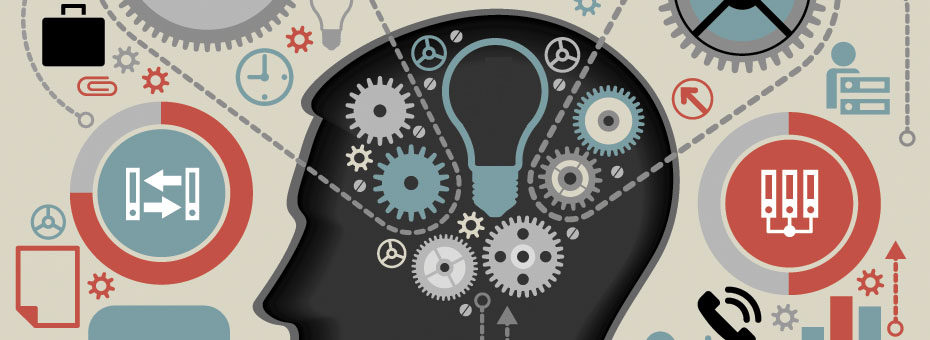The impulse to tell people what we “know” is so deeply embedded in each of us that we rarely think about how often we operate in the mode of being a “knower”. The alternative to telling people what we know is to be curious, to listen, to make observations, and to try and understand the thinking of others. When we do this, we are “learners.”
In his article, “Confessions of a Recovering Knower,” Brian Hinken, challenges us to ask ourselves if our knower impulse is limiting us. He addresses what it means to be a knower versus a learner.
Leaders, he says, are more likely to be knowers than learners because of the cultural expectations of most companies. People are usually promoted for knowing their functional area and their ability to provide solutions to their problems. But leaders who act as knowers actually limit their ability to accomplish what is important for themselves and their organization. Here’s how:
Limited Engagement: A knower will never fully engage their organization. Employees will defer to a knower-leader, failing to add the value for which they have been hired (i.e. creativity, knowledge, problem solving expertise). And when employees do offer up ideas, those different points of view get lost. Employees eventually quit doing their own thinking and expect to be told what to do.
But leaders who act as knowers actually limit their ability to accomplish what is important for themselves and their organization.
On the other hand, if the leader is a learner, she engages with people on a different level, extracting different points of view, allowing her team to agree on an approach that arises from the collective understanding of the problem situation. As a result, employees are more engaged in their work. They become more dedicated to understanding and solving the problem under these circumstances.
Consider a recent example of a knower-senior leader responsible for a software project. After a review, he was faced with the fact that his project was failing. He needed significantly more money and a one year extension in order to successfully complete the project. With some critical self-reflection and receiving feedback from his organization, he came to understand that his team members had actually been telling him what he wanted to hear: failing to bring fundamental problems to his attention. He was the knower in the group, so people had feared sharing with him any insights about the challenges of the project. He changed his approach and began acting as a learner, modeling learner behaviors—observing the facts, asking for others’ opinions, listening carefully, and staying curious. This helped reset the project team for success. He had to remind himself daily to ask questions and be supportive of the development of the team’s problem solving capability.
Limited understanding of the problem: A knower is unable to fully grasp the problem situation. When we think we know something, our minds automatically filter out all other information, limiting our ability to make good decisions. Without embracing different points of view and engaging in deep inquiry to consider the real depth of a problem, our quick actions tend to aggravate the problem situation rather than to address its root causes.
Becoming a learner can create a new awareness of our complex world. Consider this metaphor. When the Hubble Telescope was positioned beyond earth’s atmosphere, we were suddenly able to make observations that created an entirely new understanding of the earth and the larger universe. Hubble helped cosmologists determine the age of the universe to 13.7 billion years, clarify the ongoing rate of the expansion of our universe, and understand the effects of black holes. Hubble contributed to a huge leap in our ability to see the complexity, adaptability, and expansion of the universe. In a way, becoming a learner has this same effect: it allows us to see more completely our complex problem situations.
In observing leaders, I’ve seen how knower-leaders limit their organization from learning anything beyond the narrow scope of their existing knowledge. Frequently, this limitation causes a function to be optimized to the detriment of the larger organization. Sometimes, the company will go out of business because they failed to acknowledge the new customer expectations or competitive threats. Enabling the entire organization to acquire external information and react through effective problem solving processes is critical to ongoing company success.
Dropping the Knower Habit
Have you ever been sitting within arms-reach of a candy dish while you’re reading a book? Next thing you know, you have consumed a handful of candy without realizing you’ve just consumed 500 calories? Habits like these are driven from an unconscious part of the brain called the striatum. These automatic behaviors are stored in “chunks” and become a permanent part of the brain. Fortunately, there is an “air traffic controller” part of the brain, too, located in the pre-frontal cortex that can observe these habits and begin to control them. One key understanding of behavioral scientists is that it takes practice (rigor and repetition) to overlay and eventually replace existing habits.
So, how do we practice acting like a learner if habitually we act as knowers?
- Set Your Intention. Declare your intention to practice becoming a learner. Select a small problem area and think more deeply about the problem; why it exists and who should be involved in helping you address it. Ask yourself what you know and really don’t know about the problem. Acknowledge your limited knowledge of the situation and purposefully shut down your own thinking to encourage the thinking of your team members. Listen carefully and ask open ended questions to extract their understanding of the problem. Allow them to define the problem for you. Recognize that through this continued practice, you will expand your understanding of the problem situation and grow the engagement of your employees.
- Take Action. Ask your team to run experiments to clarify the problem situation. Start small. Keep focused on what you know and what you need to know. In a team meeting, capture the collective thinking. Decide together on new experiments and write down actions and responsibilities. Make the time frame short, preferably one week.
- Reflect. After you and your team have followed through on the experiments, reflect with your team on your efforts. Capture what actually happened, both validating and invalidating your hypothesis. Agree on what you and your team have learned. Create a new plan with new action steps and allow your project and learning to evolve. Repeat this process regularly with your team.
Learning to learn, difficult as it is, is the leadership practice that can make the difference. Leaders who have gone through this process with their teams not only demonstrate remarkable improvements in performance, but also a sense of personal ownership, responsibility, and pride. It takes courage and discipline for leaders to embark on this habit changing journey, but the rewards are well worth it.
Managing to Learn with the A3 Process
Learn how to solve problems and develop problem solvers.






